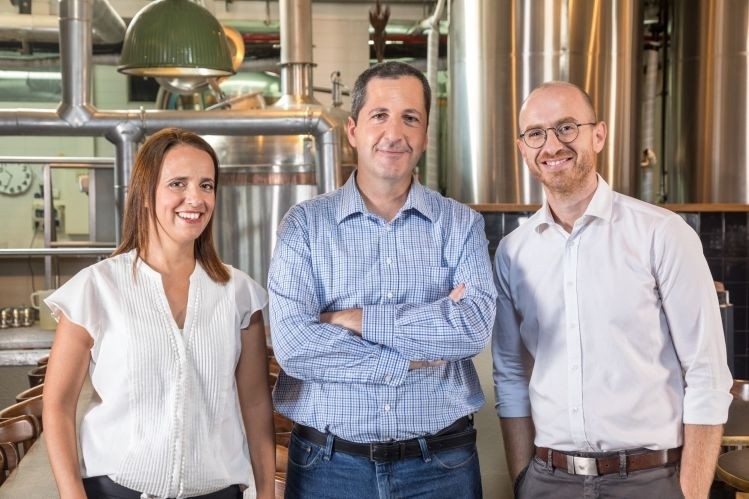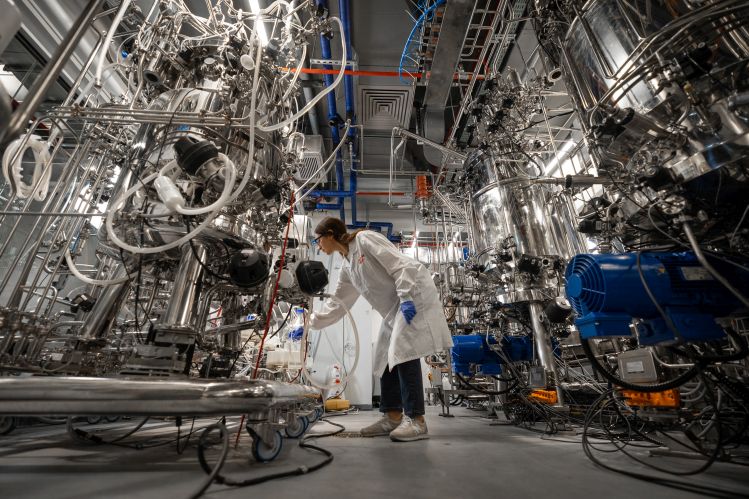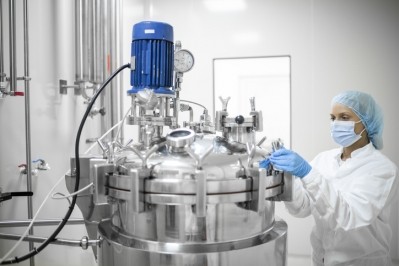Future Meat Technologies plans US plant in next 1-2 years, unveils consumer study showing openness to cell-cultured meat

Future Meat Technologies – which is backed by high-profile food industry investors including Tyson Foods, ADM, and Rich Products Corporation – recently opened a facility in Rehovot, Israel, capable of producing 500 kilos of product a day (the equivalent of around 5,000 burgers) and is gearing up to make its market debut in the US next year, pending regulatory review.
A US plant capable of producing “significantly larger” volumes is planned in the next 1-2 years, says the firm, which deploys Non GMO technology developed by founder and CSO Prof Yaakov Nahmias that it claims helps it achieve higher-density cell cultures and more efficient use of media than rivals in the nascent space.
‘We didn't nudge consumers… we didn't say how great cultured meat will be for sustainability or animal welfare’
The firm’s recent consumer survey – conducted by partner Provoke Insights in July among 2,016 US adults aged 18-50 who live in coastal states with a $45K+ annual household income – provided a brief but, it insists, impartial, description of the technology at the outset:
“We can now grow beef, pork, poultry and seafood without needing to farm animals. Instead, we can cultivate meat directly from animal cells. Thanks to this development, a new cultured meat product will soon enter the market…”
According to Liat Kaplan, VP of marketing and growth at Future Meat, “We didn't nudge consumers, we didn't flatter, we didn't say how great cultured meat will be for sustainability or animal welfare.”
After reading the above description, respondents were asked how likely they might be to "try it" or “eat it as a replacement for conventional meat” once it “becomes widely available,” with more than a third* selecting likely, although this was absent any contextual information such as pricing, labeling, and branding (which have yet to be determined).
58% of respondents were aware of cultured meat (they knew what it was or had heard of it but didn’t know what it was; this question was asked before they were given the above description).
Given a choice of four names for this ‘alternative meat’ and asked to rank them in order of most to least appealing, ‘cultured meat,’ was favored my most respondents, followed by ‘cultivated meat’ [which is now the favored consumer-facing term by the GFI, UPSIDE Foods, Eat Just, and others],‘cell cultured meat,' and in last place, 'cell-based meat.'
Finally, 30% of respondents claimed they were trying to reduce their meat consumption.
So what – if anything – are we to make of this, given that consumer surveys in this field can be of limited value (you can get pretty much whatever results you want depending on how you frame the questions and position the technology)?
Surveys about hypothetical products can only really take consumers’ temperatures, conceded Kaplan, but the results suggest at the very least an encouraging degree of awareness and openness, she claimed: “Consumers are open to this conversation now.”
Purchase drivers for cell-cultured meat
As for purchase drivers, she said, these will likely vary by market, with the first wave likely buying out of curiosity (the novelty factor). After that, health may be higher up the agenda than sustainability for the average consumer, at least to begin with, she said, although not strictly in terms of nutrition (cell-cultured meat, after all, makes a virtue of being regular meat, just made in a different way), she said.
“It’s more around how consumers perceive the [conventional] meat industry. I think in the last year, accelerated by the pandemic, consumers are a bit more aware what this industry really looks like.
“They are also thinking more about hormones and antibiotics and I think they like the idea of meat that is grown in a clean and safe environment. It’s also still meat [as opposed to a novel protein produced by, say, microbial fermentation] so as long as the taste and the cost meet the threshold, I think people will become more open to it.”
‘We read The Counter article very thoroughly’
The survey results were released following the publication of an article in The Counter (drawing upon two techno-economic analyses of cell-cultured meat: CE Delft 2021 and Humbird 2020) arguing that cell-cultured meat faces "intractable technical challenges at food scale,” echoing comments made by Impossible Foods founder Dr Pat Brown, who has described cell-cultured meat as "vaporware" in a recent interview.
Asked for his response, Future Meat CEO Rom Kshuk told FoodNavigator-USA: “We read The Counter article very thoroughly and it’s a great article, although they didn't touch on some of the processes that we’re using, so some assumptions were wrong and some of the data doesn’t reflect what the industry is currently doing.
“But I don't see this as a binary question: Is this scalable, yes or no? It’s more a question of when, not if.”
Meanwhile, the fact Future Meat Technologies is already within reach of cost parity with traditional agriculture after just three years is not bad going given that the conventional meat industry has has something of a head start, he said.
“Five months ago, we announced, we can do less than $4 per chicken breast [down from $7.50 announced at the start of the year] and we've been working since then to reduce the cost much more.”
'I don't see this as a binary question: Is this scalable, yes or no? It’s more a question of when, not if’
While growing meat from cells in bioreactors instead of living breathing animals should logically be more efficient, as resources are spent on growing only the cells that make up the meat product rather than keeping an animal alive, no one has yet produced cell-cultured meat on an industrial scale, he acknowledged.
However, Future Meat has made significant progress on achieving higher-density cell cultures and more efficient use of media via a proprietary system that allows for media recycling with a dialyzer (“Think of it like a kidney,” he says) that filters out toxic metabolites and replenishes nutrients, claimed Kshuk, who said Future Meat can produce cultured chicken, pork, and lamb, without the use of animal serum or genetic modification, with beef coming soon.
The first commercial products from Future Meat, which has raised around $43m to date from backers including Tyson Foods, ADM Ventures and S2G Ventures, will combine cell cultured meat and plant protein via an extrusion process that delivers the “distinct texture of meat,” said Kshuk.
“In any case, both approaches [extrusion post harvest or or a tissue engineering approach whereby multiple cell-types are co-cultured around an edible scaffold to produce whole cuts] involve a combination of plant-based and cell-based right now, the question is are you using the plant scaffolding in the bioreactor or post-harvest?
“Extrusion is highly scalable,” he added. “There are a lot of technologies that enable you to create texture, but frankly, I have to say that in the next two, three or four years, I don't think that the question of 100% cultured product is interesting. We want to democratize cultivated meat so it’s affordable for everyone, not just for [people dining at] Michelin starred restaurants.”
Immortalized cells, but non-GMO
“There are many differentiating factors between our technology and others in the field,” added CSO Prof. Nahmias in comments emailed to FoodNavigator-USA in late June.
“First, we use fibroblasts, connective tissue cells that are extremely sturdy and replicate rapidly requiring a few factors for growth. Other companies using stem cells have to worry about the phenotypic stability of their cells and require very expensive media to keep the cells happy.
“More importantly, fibroblasts can spontaneously immortalize [or proliferate indefinitely, so you don’t have to keep going back to the source – in this case, cells isolated from fertilized chicken eggs] without genetic modifications, making our product uniquely non-GMO, in contrast to others in the field.”
He explained that Future Meat effectively keeps passaging cells until they immortalize, with the process involving “epigenetic and chromosomal rearrangement rather than mutation.”
‘Cell densities 10-times higher than our competitors’
For the initial cell proliferation phase, when cells divide and grow before they start differentiating into muscle or fat, for example, he said, “We developed a process that allows cells to grow as single cell suspensions, without carrier beads. This means we are not limited by the surface area of our bioreactor. This translates to cell densities 10-times higher than our competitors.
“We reach 100 billion cells per liter [whereas] other companies [can] reach 10 billion/liter… and our cells show 18 to 24 hours doubling time.”
Media costs: ‘Fibroblasts don’t seem to require many growth factors previously thought to be essential’
Another key differentiator, he claimed, is Future Meat’s approach to reducing media costs, which is multifaceted.
First, he said, “fibroblasts don’t seem to require many growth factors previously thought to be essential and they need very little insulin to grow efficiently. This alone reduced the cost of our starting media by 35% compared to others.”
A second factor, he said, is “our ability to replace serum proteins, such as albumin, with plant-based protein homologues identified in chickpeas. This proprietary technology allowed us to reduce the cost of the media by an additional 60%.”
A third factor, he said, is the firm’s media rejuvenation technology “as it allows us to recycle macronutrients and use them to completion rather than waste key nutrients in the process of washing away toxins.”
Asked whether the company is exploring the use of small molecules to replace more expensive growth factors in the media, he said, “Small molecules will need to be approved by the regulatory agencies and thus won’t be used in the first generation of products we will launch. However, [down the road] the small molecules we identified can reduce the cost of the cultured medium by an additional 25%."

The regulatory path forward
Singapore is the first place to permit cell-cultured meat, recently approving products manufactured by San Francisco-based Eat Just.
In the US, the USDA and the FDA have outlined a regulatory framework for foods containing cultured meat and seafood cells, with the FDA recently telling us that it “intends to issue draft guidance on the pre-market consultation process,” although it did not provide a timeline.
Asked about the consultation process, Kshuk said, “It’s somewhere between a GRAS notification and a food additive petition. So we think we might get a no questions type of letter in the end rather than a yes/no green light.”
As for nomenclature, the USDA recently issued an advanced notice of proposed rulemaking (ANPR) to solicit comments on how to label cell-cultured meat and poultry, but says it will review labels submitted before this process is complete on the understanding they may need to be changed down the road to comply with its final regulations.
In the meantime, there is growing consensus within the industry around the term 'cultivated meat,’ claims the Good Food Institute.
*This was a straight tick box exercise, so it's not known whether the two thirds who did not tick the boxes saying that they would likely "try it" or “eat it as a replacement for conventional meat” were strongly opposed to the concept, disinterested at this stage, or weren't sure.
Cell-cultured meat vs conventional meat
Supporters of cell-cultured meat claim it is better for animals and the environment, but also offers other advantages over traditional meat in that it does not contain bacterial pathogens that pose food safety risks.
Also, they say, it will not suffer from price/supply volatility risks from animal infectious diseases (avian flu, porcine epidemic diarrheal virus); it requires fewer inputs for a given quantity of meat; and is more controllable and tunable, enabling production of only high-grade meats in quantities dictated by consumer demand, rather than by the biology of the animal.
And while antibiotics may be used in laboratory settings given the number of researchers handling cells, key players say they are confident that commercial-scale production of cultured meat will be possible without antibiotics, potentially a key selling point given consumers’ concerns about the use of antibiotics in the conventional meat industry and its contribution to antibiotic resistance.
















